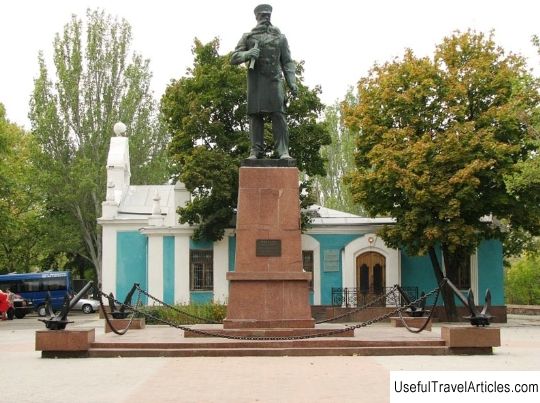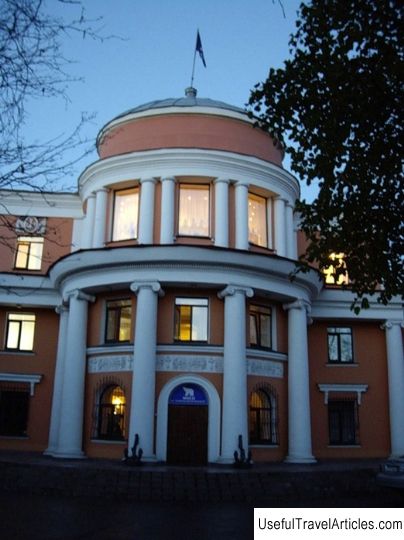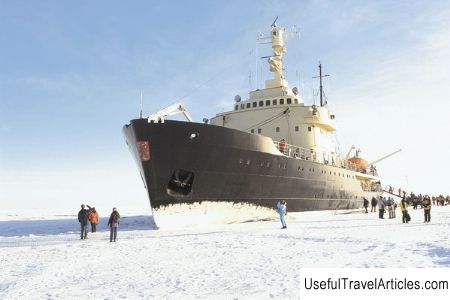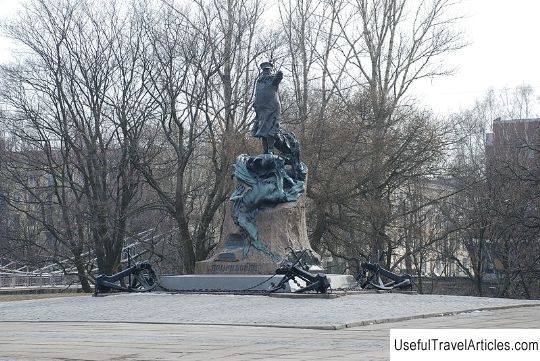Monument to the icebreaker Ermak description and photo - Russia - North-West: Murmansk
Rating: 8,2/10 (1839 votes) 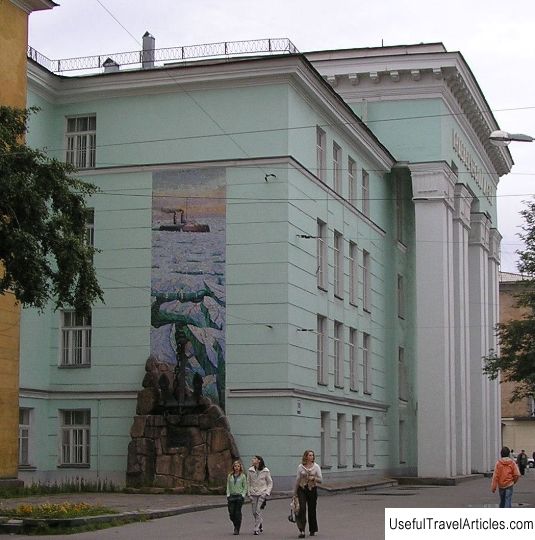
Monument to the icebreaker "Ermak" description and photo - Russia - North-West: Murmansk. Detailed information about the attraction. Description, photos and a map showing the nearest significant objects. Photo and descriptionIn Murmansk, next to the building of the local history museum, there is a monument to one of the first icebreakers of the Northern Fleet, who served in its composition for 64 years. Ermak, named after the Russian explorer of Siberia, was the first icebreaker of the Arctic class. He owes his creation to the Russian naval commander and oceanographer Admiral Stepan Osipovich Makarov. He was the first to put forward the idea of building an icebreaker that would be able to overcome the Arctic ice. In 1897, the government allocated funds for the construction of a new type of ship. Makarov, at the head of a special commission, led the development of technical conditions for the construction of the ship. The commission included renowned scientists and engineers. In 1897, it was decided that the construction of the ship will be carried out by the English shipbuilding company Armstrong, Whitward and Co. A month before the end of the term prescribed in the contract, "Ermak" was ready for testing, and after a successful check was put into operation. On the shore, the icebreaker was met by local residents who had gathered in a crowd at the pier. A military band was playing. In honor of the event, a high-level reception was organized. At that time, it was a unique ship breaking ice up to two meters. By those standards, it was gigantic. Its length reached about 96 meters, width - more than 20 meters, displacement was equal to 7875 tons. In 1899 "Ermak" set off on its maiden voyage under the leadership of Makarov. In the beginning, the icebreaker flew under a commercial flag, because it has not yet been part of the navy. "Ermak" was able to swim on the ice to 81 ° 26 'north latitude. He circled Svalbard, Novaya Zemlya and Franz Josef Land. It was a kind of record. Further, the icebreaker served in the Baltic Sea for thirty years. With his help, the Northern Sea Route was mastered, caravans of ships successfully passed through the ice of the northern seas. The icebreaker moved further and further north and broke another record, conquering the northern latitude of 83 ° 05 '. He participated in the rescue of many ships and expeditions. As part of the Navy, he participated in many military operations during the Russian-Japanese, World War I and the Great Patriotic War. In 1949, for 50 years of peaceful and military service, "Ermak" received an award - the Order of Lenin. Over the long years of work in the North, "Ermak" fell into disrepair. In the early sixties, he was declared unfit for service, and the question was raised about the future fate of the veteran of the ice element. Residents of Murmansk advocated that "Ermak" became a museum of the history of the conquest of the Arctic. The youth of the city initiated an action to collect scrap metal, the weight of which would replace the weight of the ship itself, which was to be written off. However, despite attempts to preserve the first Arctic icebreaker for history, they failed to save it. In 1963 it was decommissioned and scrapped. In its place in 1974, another icebreaker with the same name arrived. However, the memory of the first Arctic icebreaker "Ermak" was nevertheless immortalized for posterity. On November 3, 1965, a memorial was erected near the wall of the building of the regional museum of local lore in the city of Murmansk in memory of the legendary icebreaker "Ermak". The monument is an ensemble of a monumental mosaic canvas and an anchor of the icebreaker "Ermak" at the foot on a pedestal. The project of the mosaic panel was created by the architect N.P. Bystryakov. The work on his project was carried out by the mosaist S.A. Nikolaev and artist I.D. Dyachenko in the workshops of the USSR Academy of Arts in Leningrad. Then experts in Murmansk mounted the canvas and installed it on the wall of the museum. The mosaic was folded from pieces of smalt. The panel depicts the Ermak icebreaker paving the way in the Arctic ice expanses. Below, on a granite pedestal, there is a three-ton anchor with an almost five-meter chain, which was actually removed from this vessel, as well as a memorial plate made of bronze. Until 1997, the monument was protected by the state. After the collapse of the USSR, the new government excluded him from the list of protected objects.     Topic: Monument to the icebreaker Ermak description and photo - Russia - North-West: Murmansk. |
